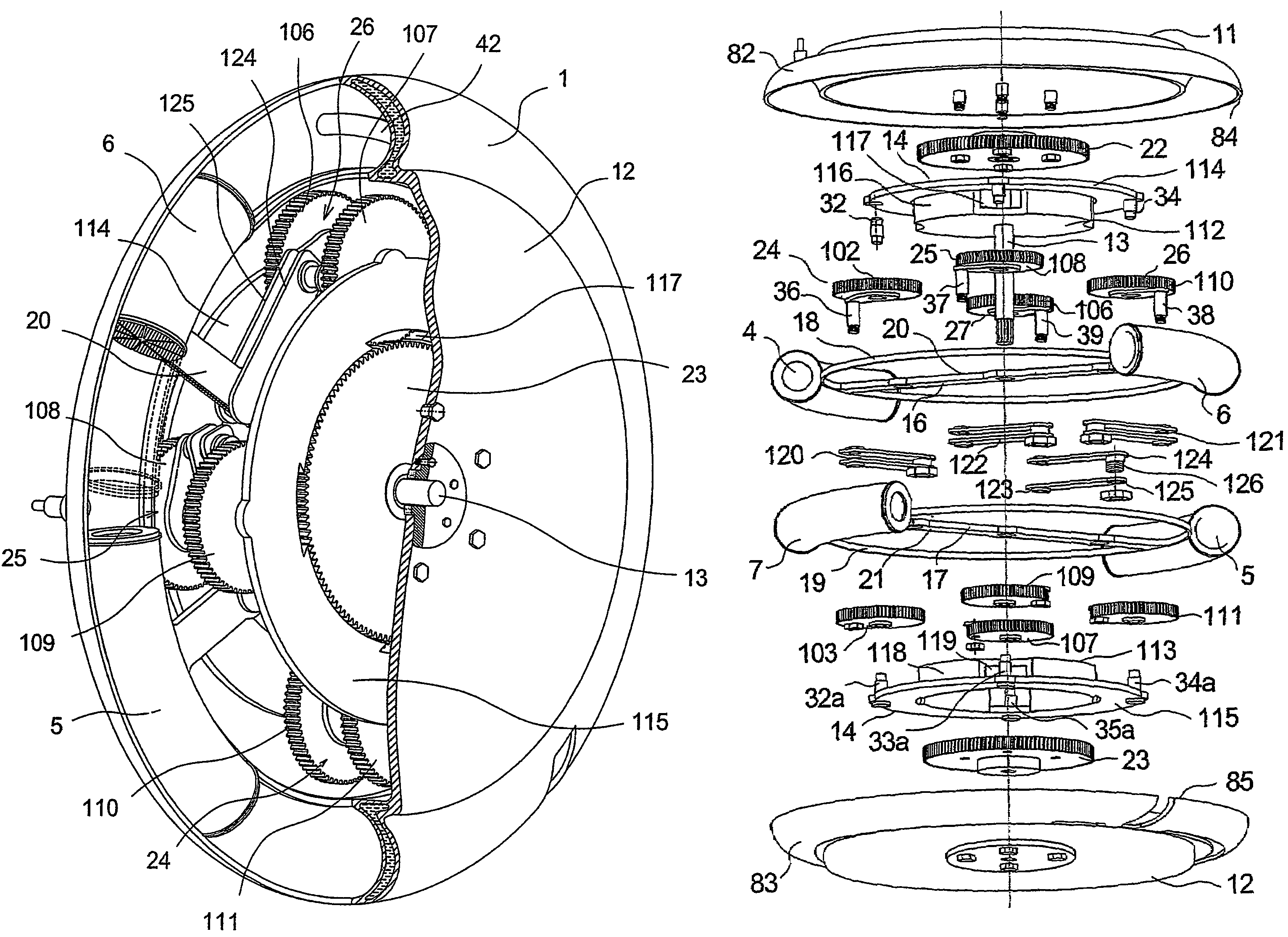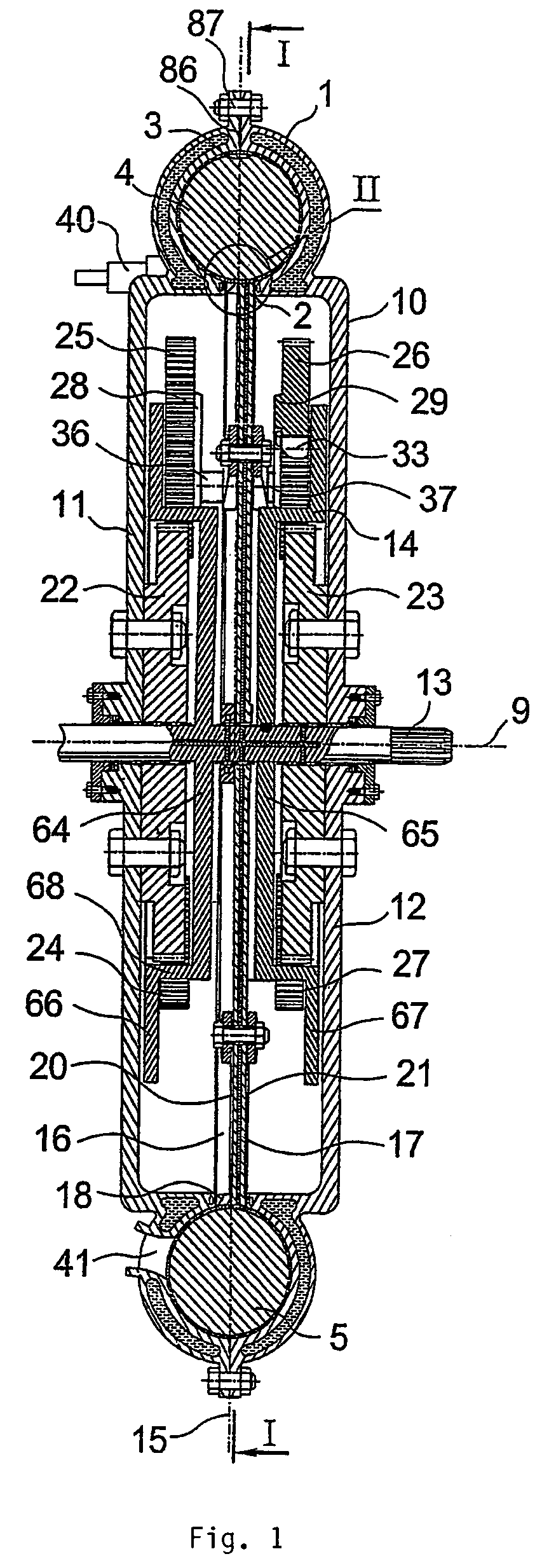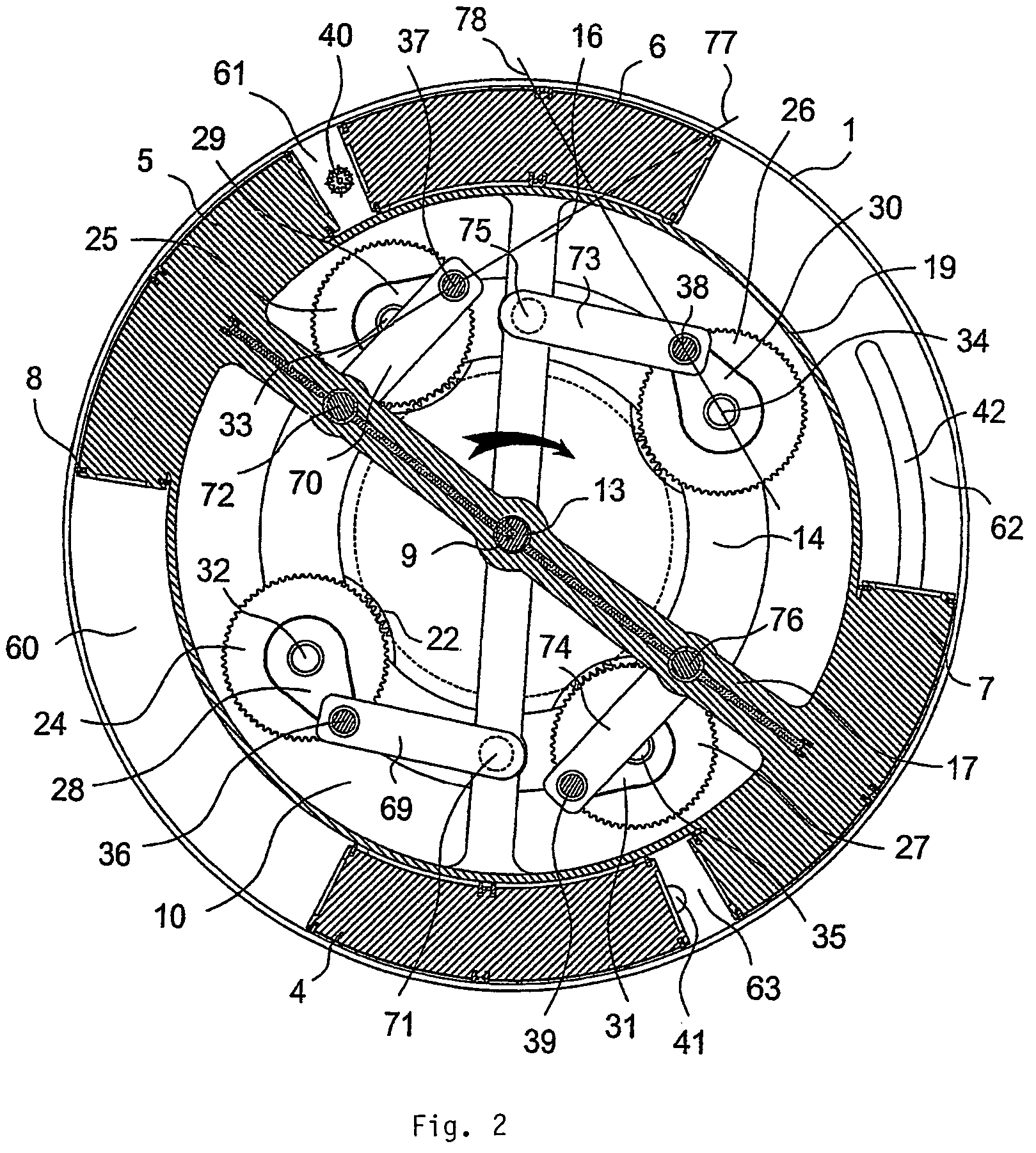Rotary internal combustion engine
a technology of internal combustion engine and piston engine, which is applied in the direction of rotary piston engine, rotary or oscillating piston engine, toothed gearing, etc., can solve the problems of increasing the number of parts, reducing the energy consumption of energy required to overcome the friction between the components of the transmission gear, and complicating the design of the flywheel, so as to reduce the load on the components, reduce the impact load, and increase the engine performance index
- Summary
- Abstract
- Description
- Claims
- Application Information
AI Technical Summary
Benefits of technology
Problems solved by technology
Method used
Image
Examples
Embodiment Construction
[0026]The rotary internal combustion engine comprises hollow torus-shaped working cylinder 1 (FIGS. 1 and 2) provided with through continuous circular slot 2 whose walls are symmetrically arranged relative to the central plane of cylinder 1 about the smallest-diameter surface 3 thereof; four pistons 4, 5, 6, and 7 mounted in the working cylinder for travel along the internal surface thereof, shaped to conform this surface and provided with compression and oil-scraper rings 8 near the ends thereof. The inventive engine is also provided with circular housing 10 with side walls 11 and 12, symmetrically disposed relative to central axis 9 of working cylinder 1; output shaft 13 with flywheel 14, symmetrically mounted relative to line 15 and for rotation about central axis 9 of working cylinder 1 in side walls 11 and 12; two bearing members 16 and 17 provided with rings 18 and 19, and walls 20 and 21. The engine is also provided with a transmission gear comprising two toothed gearwheels i...
PUM
 Login to View More
Login to View More Abstract
Description
Claims
Application Information
 Login to View More
Login to View More - R&D
- Intellectual Property
- Life Sciences
- Materials
- Tech Scout
- Unparalleled Data Quality
- Higher Quality Content
- 60% Fewer Hallucinations
Browse by: Latest US Patents, China's latest patents, Technical Efficacy Thesaurus, Application Domain, Technology Topic, Popular Technical Reports.
© 2025 PatSnap. All rights reserved.Legal|Privacy policy|Modern Slavery Act Transparency Statement|Sitemap|About US| Contact US: help@patsnap.com



